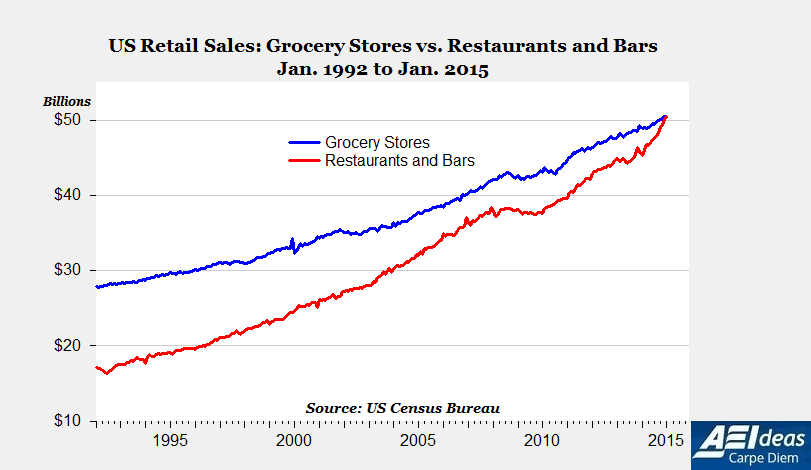The Forecast Restaurants Need to Know About Climate Change
5 Min Read By Justin Harkey
While underlying forces behind rising global warming remain an issue of contention for some, the reality of climate change is increasingly difficult for anyone to ignore. And for hospitality and food service professionals around the world, that has some very real and potentially significant implications.
The bottom line is that climate change is affecting everything, everyone, everywhere.
Changing weather patterns can affect everything from crop yields and livestock health to the logistics of food production and availability, and from industry financial structures to consumer preferences and expectations. On the most basic level, not only will global warming change what is being served in restaurants and hotels and the cost of products, but it will almost certainly create seasonal limitations on certain food items. While some of the worst effects of climate change are still in the future, the ramifications are far from theoretical: menus and store shelves are already being impacted, and that impact will only become more evident over time.
It’s not just what we eat, but what we drink, as well. The historic California drought has had an impact on many wineries in the Golden State, and the remnants of the El Nino in the Pacific is now forecast to swing in the opposite direction—potentially causing a difficult winter across the Southeast. Florida citrus and soy and corn across the region could all be impacted, as well. And that’s just what’s happening now.
The bottom line is that climate change is affecting everything, everyone, everywhere. We are moving further away from weather-related regional displacements toward a global pattern of significant climate disruption.
Weather or Not
Climate change has been cited as the driving force behind inconsistent and unpredictable agricultural conditions, shifting growing seasons, and more pronounced and erratic cycles of flooding and drought.
It’s not just warming the planet, it’s changing millennia-old climate patterns, making some parts of the world wetter and others dryer. A quote from an Intergovernmental Panel on Climate Change (IPCC) report predicts that “increases in the frequency of droughts and floods are projected to affect local production negatively,” and the beginnings of that pattern are evident around the world. The California drought is mirrored by a similarly punishing drought in Australia, with signs of changing rainfall patterns that may have contributed to a five-year-long drought in New South Wales. Studies have warned that the already arid Southwest U.S. is particularly vulnerable to “megadroughts”: severe as historic droughts, but longer lasting and more commonly occurring.
Impact and Implications
Rising temperatures and changes in severe weather patterns could come with a hefty price tag for a nation where crops, livestock, and seafood harvests are responsible for over $300 billion in annual economic output. That number spikes to $750 billion when food preparation, production, service and other related industries are factored in. It doesn’t take much imagination, when an impact more than doubles, to see how significant of an economic hit could result from disruption in those industries.
A study conducted by the Business Forward Foundation shows how those costs could impact the restaurant industry, noting that severe weather has already had a “profound impact” in some of “America’s most important food-producing regions.” For example, beef prices increased 34 percent from 2010 to 2014.
But for those in the food and beverage industry specifically, the bottom line is just part of the calculus. Of more immediate concern to many industry professionals is how menu planning and food preparation for their customers and guests will be affected.
Warming New England waters are contributing to shifting lobster populations, Pacific salmon are changing their migration behaviors, the grapes and growing season in California wine country are being impacted, and there is even a chance of significant coffee shortages over the next few decades—being two personal favorites of mine, this hits home.
A November 2015 article in Eater about changing weather patterns reports that “one of Belgium’s most celebrated beer makers is being forced to scale back production thanks to rising temperatures” and states that Chipotle “could consider nixing guacamole or other items from its menu due to rising food costs associated with changing weather patterns.” Say what you will about their health record, this is substantial. The convenience of an increasingly global marketplace and the availability of four-season fruits and vegetables actually makes the industry more vulnerable to large-scale disruptions.
Fortunately, the impact is still more of a periodic annoyance than a crippling problem. We are not at a crisis point yet, but the train has left the station and is picking up steam. No matter what happens over the next 20 years, the change in climate is going to affect menus. The real question is: how far will it go? Will avocados be unavailable some years? Will some products become only accessible during certain seasons, and with less predictability than before? The seasonal menu approach that has become so prevalent, it gets trickier when you don’t know what crops and food sources are going to be available from one season to the next. And, in addition to less predictable pricing and supply, there are other unknowns, such as how organic farmers will respond to challenging conditions.
Consumers today—for the first time in history—spend more money in restaurants than in grocery stores, a reality that has led some analysts to talk about the possibility of a “restaurant recession.” It will be interesting to watch and see how consumer spending patterns and food preferences respond to a changing climate, especially when it is the local, organically produced products that are generally more susceptible to climate disruption.
Taking Action
While it’s not yet clear exactly how much climate change is impacting the industry, and what the long-term prognosis might be, many food and beverage professionals are not taking this issue lightly. Ironically, food production and consumption contributes to somewhere between 15 and 50 percent of all global climate emissions, meaning that industry changes could have a direct positive impact on the forces threatening their livelihood.
No matter what happens over the next 20 years, the change in climate is going to affect menus.
Some fine dining restaurants, such as Blue Hill in New York, have bought/co-opted their supply chain. By owning the farm where they source the majority of their ingredients from, they have more control and will ultimately be less susceptible to broader climate changes and supply disruptions. It seems logical to wonder if this practice will expand, perhaps even being adopted by mainstream national brands.
The Perennial restaurant in San Francisco, which opened this summer, not only uses a state-of-the-art, energy-efficient kitchen, but boasts a “living pantry” to store herbs and specialty greens grown in its own aquaponic growing operation. In addition, it exclusively buys local and works with small growers, uses products raised and grown by suppliers that adhere to sustainable and climate-friendly practices, and grows many of its own ingredients—using fertilizer made from the kitchen’s own food waste.
In addition to government action led by agencies like the FDA and EPA, independent advocacy groups are emerging to push for action, too. For example, ZeroFoodprint provides tools that restaurateurs can use to decrease their carbon emissions and reduce their environmental impact, and The National Sustainable Agriculture Coalition promotes biologically diverse agricultural systems, crop-livestock integrated farming systems and other sustainable practices.
Just Getting Warmed Up
The reality is that there are still so many unknowns, and it’s far from clear how this will all play out—and how severe the impacts will be on food and beverage. It is encouraging to see big companies across the U.S. and around the world commit to things like lowering carbon emissions and working to end deforestation. Because if the current trajectory plays out, everyone from industry professionals to everyday consumers will be impacted.


